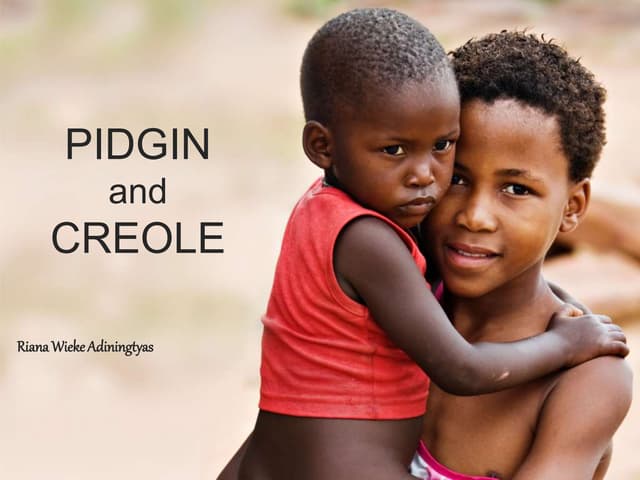

T homason), contact linguistics (R ajend M esthrie), multilingualism (P ieter M uysken), population demographics (J acquesA rends), and sociohistorical (J ohn V ictor S ingler) and cultural (C hristine J ourdan) contexts can all help us piece together the various factors involved in pidgin and creole formation. The chapters in this section examine how the study of second language acquisition (J eff S iegel), the language bioprogram hypothesis (T onjes V eenstra), historical linguistics (S arah G. Part 2, ‘Perspectives on pidgin/creole genesis’, reveals how diverse perspectives on creoles have each contributed to enhancing our understanding of how they emerge and develop.

In addition, structural differences between pidgins and creoles (P eter B akker) and non-Indo-European pidgins and creoles (K ees V ersteegh) are investigated. Part 1, ‘Properties of pidgins and creoles’, surveys dominant linguistic properties of pidgins and creoles in the core domains of syntax (D on W inford), syntax/discourse interface and variability (M iriam M eyerhoff), morphology (T erry C rowley), and phonology (N orval S. Later in this review I evaluate the extent to which these two main lines of inquiry are adequately addressed in the volume. Two core issues that this volume targets are how exactly substrates, lexifiers, and universal forces interact and contribute to the emergence of a new creole, and what the precise mechanisms involved in creole genesis are. It also highlights the large questions that remain central to the field in the areas of grammatical theory, historical linguistics, and sociolinguistics.

This handbook reflects the state of the art in creole studies and through a collection of twenty-six chapters captures the main insights that creolists have achieved in recent years with regard to the nature of creole languages, their linguistic properties, genesis, and development.


 0 kommentar(er)
0 kommentar(er)
